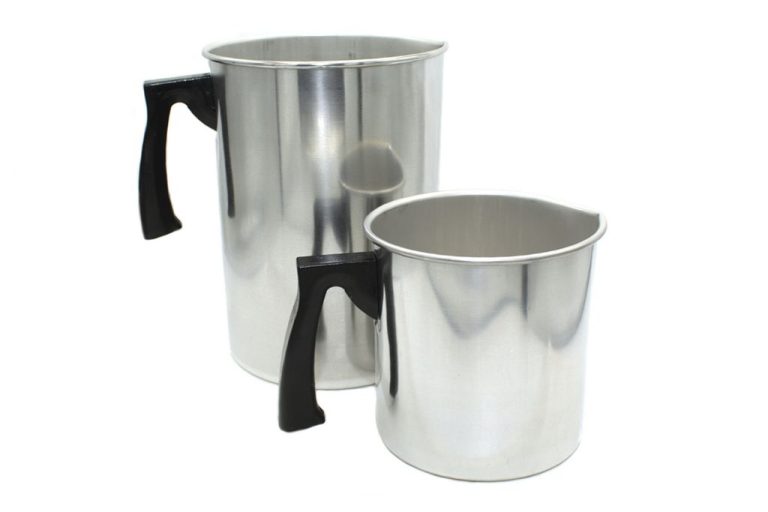What Does It Mean To Trim The Wick?
What is a Wick?
A wick is a specially designed component that transports fuel to the flame in candles, oil lamps, and other fuel-burning devices that produce light. Wicks are typically made from braided cotton, paper, or other fibrous materials that can soak up liquid fuels like wax or oil through capillary action.
As the wick absorbs the liquid fuel, some of the fuel travels up the wick toward the flame through capillary action. When the fuel reaches the flame, it vaporizes and burns. This capillary action of drawing the fuel up the wick is crucial for providing a continuous fuel source to keep the flame burning steadily.
Wicks are often flat or loosely braided from multiple strands to maximize surface area. This allows more liquid fuel to be wicked up toward the flame. Wicks are designed to burn slowly and at an even rate relative to how quickly the fuel is drawn up from below.
Why Trimming is Necessary
Trimming the wick regularly is crucial to keep candles burning their best. An untrimmed wick can become too long, disrupting proper capillary action and leading to excessive smoke and soot.
As a candle burns, the wick slowly becomes charred and elongated from the flame. This charring interferes with the wick’s capillary action, which is the wicking of melted wax to the flame through the wick’s fibers. A long, charred wick has difficulty bringing wax to the flame consistently. This can result in an uneven burn, smoke, and excess soot.
Trimming the wick to its original size before each lighting maintains the proper capillary flow of wax and produces an even, steady flame without smoke. Keeping the wick trimmed also prevents mushrooming, which is when a long wick curls over on itself, resulting in inefficient burning and excessive soot.
When to Trim the Wick
There are four main times when you should trim the wick of a candle:
-
Before lighting for the first time – Brand new candles often have longer wicks that should be trimmed to 1⁄4” before the initial lighting to prevent issues.
-
After a few hours of burning – As a candle burns down, the wick will get longer and require trimming to maintain the proper 1⁄4” length.
-
When wick gets too long – If a wick grows to 1⁄2” or longer, it’s time to trim it back down to size for optimal performance.
-
When mushrooming occurs – Mushrooming happens when a wick curls over as it burns and must be trimmed off to allow for a straight, upright wick.
Trimming at these key times allows for proper wax pooling, reduces smoking and sputtering, and prevents the wick from drowning in melted wax.
How to Trim
Trimming the wick properly is key to enjoying your candle and avoiding issues. Use dedicated wick trimmers or small scissors to trim the wick. You’ll want to trim the wick to around 1/4″ in length before lighting to avoid mushrooming and promote proper melting. Cut straight across the top of the wick in one snip for the most even burn. Avoid leaving any frayed edges or trimming on an angle.
Trim Before Lighting
An important step in wick trimming is to trim the wick before lighting your candle for the first time. Allow freshly poured candles to cure for at least 24 hours before burning. This curing time allows the wax to settle and the fragrance to fully disperse throughout the candle. Trimming the wick before the initial lighting helps establish the proper melt pool for the candle and promotes full wax coverage over the wick.
Make sure to trim the wick to the manufacturer’s recommended height, usually around 1/4 inch, before lighting for the first time. This proper pre-trim helps prevent issues like tunneling and sinking wicks. It also reduces excess smoke and promotes an even burn. Taking this simple step of trimming to size before the initial lighting sets your candle up for success and optimal performance.
Maintain Proper Length
One of the most important aspects of wick trimming is maintaining proper length. The height of the exposed wick impacts several factors:
- Burn time – Longer wicks mean the candle can hold a flame for longer before the wax pool is used up. However, an overly long wick may create excessive smoke or an erratic flame.
- Melt pool – If the wick is too short, the melt pool may be too small and not allow the candle to properly liquify the wax to fuel the flame. A wick that’s too long can create a melt pool that is wider than the container can handle.
- Smoke – Excessive smoke indicates the wick may be too long for that particular wax and wick combination. Trimming to the proper height can minimize unwanted smoke.
To find the optimal wick length, refer to the manufacturer’s recommendations for that specific candle. The packaging or product description typically provides target trim lengths. A good rule of thumb is to trim the wick to 1⁄4 inch before lighting, then adjust as needed for optimal burn and melt pool after the initial burn.
Avoid Mushrooming
Mushrooming is when the wick curls over and hardens at the tip from the flame. This is usually caused by allowing the wick to become too long which exposes more surface area to the flame. The intense heat from the flame causes the wick fibers to carbonize and bend over. If left untrimmed, the mushrooming at the tip can become severe enough to impede the capillary action of the wick and disrupt proper fueling of the flame.
To prevent mushrooming, it is important to trim the wick regularly to maintain the proper length. The wick should be trimmed back to just above the residual wax pool each time before lighting to avoid mushrooming. Trimming the wick to the appropriate short length will help the wick burn properly without mushrooming at the tip. Maintaining a short, trimmed wick is the best way to avoid the unsightly curling over and mushroom shape on the wick tip caused by the flame heat over time.
Troubleshooting
If your candle is not burning properly, it likely needs a wick trim. Here are some common issues and solutions:
Candles that tunnel or smoke often need a trim. Tunneling is when a hole forms in the center of the wax pool as the candle burns. This happens when the wick is too long and the flame is too big. Trimming the wick will help the candle burn evenly without excess smoke.
If your candle doesn’t stay lit, the wick may be too short. The wick needs to be long enough for the flame to keep burning. Try trimming less off the wick and allow it to be slightly longer. Monitor as it burns and trim again if needed.
Trimming on a regular basis, such as before each lighting, will help prevent tunneling and smoking issues. Properly maintaining wick length improves candle performance.
Safety Tips
When trimming the wick, it is important to keep safety in mind. Here are some tips for staying safe:
- Allow wax and metal parts to completely cool before trimming. Never trim a hot or warm wick as this can lead to injury.
- Keep wick trimmers and scissors away from children. Wick trimmers are sharp tools that can cause harm if used improperly.
- Be cautious handling scissors around flames. Have a safe trimming area away from any open flames to avoid potential accidents.
Following basic safety precautions will help ensure the wick trimming process goes smoothly without any injuries or incidents.
Proper Wick Maintenance
Trimming is just one part of proper wick care. In addition to trimming, wicks may also need to be recentered or have excess wax poured off periodically. Always refer to the candle or wick manufacturer’s guidelines for additional maintenance recommendations.
Over time, wicks can become off-center inside the candle. This can cause uneven burning and tunneling. Gently straighten and re-center the wick as needed to maintain proper positioning within the wax pool.
As candles burn down, wax can accumulate on the wick. When excess wax builds up, carefully pour or chip it off to allow the wick to burn freely. Take care not to damage the wick when removing the wax.
Regular trimming and maintenance keeps wicks in optimal condition for full, even burning. But different wicks have different requirements, so routinely check and follow the specifications provided by the manufacturer. Properly maintained wicks lead to better performance and a safer, higher quality candle experience.






